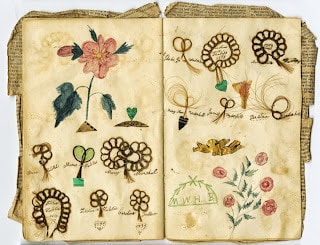Made for a Day, Yesterday—Historical Ephemera at the Library Company

Children’s Patent Elastic Knee Protector. New York: Chas. Shield’s Sons, ca. 1880. Chromolithograph.
Remnants of Everyday Life: Historical Ephemera in the Workplace, Street, and Home, on display through December 13, 2013, showcases the Library Company’s unique collections of early American ephemera which range from small fragments as Victorian-era trade cards to wall-size recruitment posters. Curated by Visual Culture Program co-Directors Rachel D’Agostino and Erika Piola, the exhibition explores the creation, dissemination, and consumption of the transient printed materials ubiquitous in the daily lives of our forbearers.
Remnants of Everyday Life shows how the stylistic evolution of ephemera, intrinsically tied to changes in mass production technologies, corresponded with shifts in cultural values and priorities. The exhibition examines the history of graphic design, the changing nature of 19th-century leisure activities, and the impact of popular print media and fads on Victorian-era consumerism. Displayed items include one of the few known silhouettes of an African American, the manumitted slave and profile cutter Moses Williams; the ground-breaking 1870 commercial graphic design manual Typographia; and one of the first illustrated circus posters, issued in 1828—as well as a range of posters and broadsides, business forms and stationery, novelty postcards, parlor games, and pop-up trade cards.

Hair book compiled by Margaret Williams, 1839.
The Library Company has one of the country’s largest, most important, and most varied collections of historical ephemera, initiated with the purchase of the Du Simitière Collection in 1785. In 2012 the Library Company completed a two-year effort, funded by the National Endowment for the Humanities, to arrange, catalog, and selectively digitize the nearly 30,000 pieces in our holdings. This exhibition was made possible, in part, by the generous support of the Philadelphia Cultural Fund and the Pennsylvania Council on the Arts.

Leave a Reply
Want to join the discussion?Feel free to contribute!